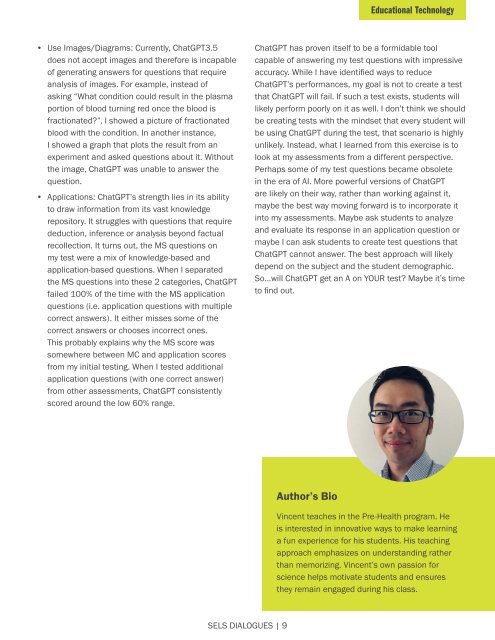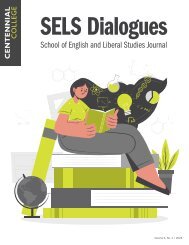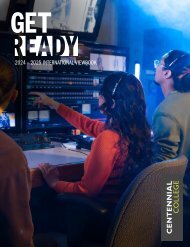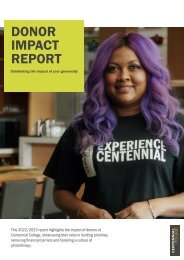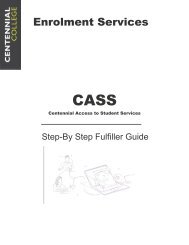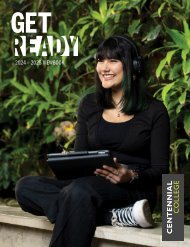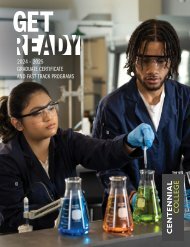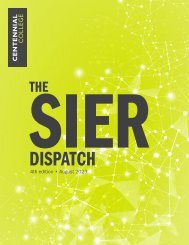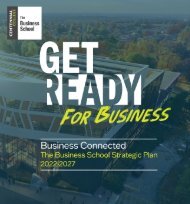SELS Dialogues Journal Volume 3 Issue 1
A diverse collection of articles, each offering a unique perspective and contributing to the ever-expanding landscape of knowledge and creativity.
A diverse collection of articles, each offering a unique perspective and contributing to the ever-expanding landscape of knowledge and creativity.
Create successful ePaper yourself
Turn your PDF publications into a flip-book with our unique Google optimized e-Paper software.
Educational Technology<br />
• Use Images/Diagrams: Currently, ChatGPT3.5<br />
does not accept images and therefore is incapable<br />
of generating answers for questions that require<br />
analysis of images. For example, instead of<br />
asking “What condition could result in the plasma<br />
portion of blood turning red once the blood is<br />
fractionated?”, I showed a picture of fractionated<br />
blood with the condition. In another instance,<br />
I showed a graph that plots the result from an<br />
experiment and asked questions about it. Without<br />
the image, ChatGPT was unable to answer the<br />
question.<br />
• Applications: ChatGPT’s strength lies in its ability<br />
to draw information from its vast knowledge<br />
repository. It struggles with questions that require<br />
deduction, inference or analysis beyond factual<br />
recollection. It turns out, the MS questions on<br />
my test were a mix of knowledge-based and<br />
application-based questions. When I separated<br />
the MS questions into these 2 categories, ChatGPT<br />
failed 100% of the time with the MS application<br />
questions (i.e. application questions with multiple<br />
correct answers). It either misses some of the<br />
correct answers or chooses incorrect ones.<br />
This probably explains why the MS score was<br />
somewhere between MC and application scores<br />
from my initial testing. When I tested additional<br />
application questions (with one correct answer)<br />
from other assessments, ChatGPT consistently<br />
scored around the low 60% range.<br />
ChatGPT has proven itself to be a formidable tool<br />
capable of answering my test questions with impressive<br />
accuracy. While I have identified ways to reduce<br />
ChatGPT’s performances, my goal is not to create a test<br />
that ChatGPT will fail. If such a test exists, students will<br />
likely perform poorly on it as well. I don’t think we should<br />
be creating tests with the mindset that every student will<br />
be using ChatGPT during the test, that scenario is highly<br />
unlikely. Instead, what I learned from this exercise is to<br />
look at my assessments from a different perspective.<br />
Perhaps some of my test questions became obsolete<br />
in the era of AI. More powerful versions of ChatGPT<br />
are likely on their way, rather than working against it,<br />
maybe the best way moving forward is to incorporate it<br />
into my assessments. Maybe ask students to analyze<br />
and evaluate its response in an application question or<br />
maybe I can ask students to create test questions that<br />
ChatGPT cannot answer. The best approach will likely<br />
depend on the subject and the student demographic.<br />
So…will ChatGPT get an A on YOUR test? Maybe it’s time<br />
to find out.<br />
Author’s Bio<br />
Vincent teaches in the Pre-Health program. He<br />
is interested in innovative ways to make learning<br />
a fun experience for his students. His teaching<br />
approach emphasizes on understanding rather<br />
than memorizing. Vincent’s own passion for<br />
science helps motivate students and ensures<br />
they remain engaged during his class.<br />
<strong>SELS</strong> DIALOGUES | 9


